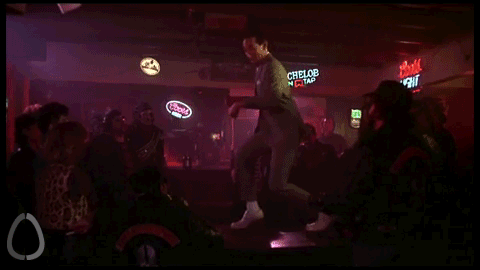The rumors were true, vTax is gone. The announcement, rumored last week, was confirmed today.
Tequila!
Don’t let the door hit you on the ass on your way out. And perusing their pricing white paper you can see the vRAM allotments are all listed as unlimited.
vRAM limits (or vTax as it’s derisively called) has been a year-long disaster for VMware, and here’s why:
It stole the narrative
vTax stole the narrative. All of it. Yay, you presented a major release of your flagship product with tons of new features and added more awesomesauce. Except no one wanted to talk about any of it. Everyone wanted to talk about vRAM, and how it sucked. In blogs, message boards, and IT discussions, it’s all anyone wanted to talk about. And other than a few brave folks who defended vTax, the reaction was overwhelmingly negative.
It peeved off the enthusiast community
Those key nerds (such as yours truly) who champion a technology felt screwed after they limited the free version to 8 GB. They later revised it to 32 GB after the uproar, which right now is fair (and so far it’s stil 32 GB). That’ll do for now, but I think by next year they need to kick it up to 48 GB.
It was fucking confusing
Wait, what? How much vRAM do I need to buy? OK, why do I need to 10 socket licenses for a 2-way server. I have 512 GB of RAM and 2 CPUs, so I have to buy 512 GB of vRAM? Oh, only if I use it all. So if I’m only using 128 GB, I only need to buy 4? OK, well, wait, what about VMs over 96 GB, they only count towards 96 GB? What?
What?
It was so complicated, there even a tool to help you figure out how much vRAM you needed. (Hint: If you need a program to figure out your licensing, your licensing sucks.)
It gave the competition a leg up
It’s almost as if VMware said to Microsoft and RedHat: “Here guys, have some market share.” I imagined that executives over at Microsoft and Redhat were naming their children after VMware for the gift they gave them. A year later, I see a lot more Hyper-V (and lots of excitement towards Hyper-V 3) and KVM discussions. And while VMware is in virtually (get it?) every data center, from my limited view Hyper-V and KVM seem to be installed in production in far more data centers than they were a year ago, presumably taking away seats from VMware. (What I don’t see, oddly enough, is Citrix Xen for server virtualization. Citrix seems to be concentrating only on the VDI.)
It fought the future
One of the defenses that VMware and those that sided with VMware on the vTax issue was that 90+% of current customers wouldn’t need to pay additional licensing fees to upgrade to vSphere 5. I have a hard time swallowing that, I think the number was much lower than they were saying (perhaps some self-delusion there). They saw a customer average of 6:1 in terms of VMs per host, which I think is laughably low. As laughable as when Dr Evil vastly over-estimated the value of 1 million dollars.
We have achieved server consolidation of 6:1!
And add into that hardware refreshes. The servers and blades that IT organizations are looking to buy aren’t 48 GB systems anymore. The ones that are catching our wandering eyes are stuffed to the brim with RAM. A 2-way blade with 512 GB of RAM would need to buy 11 socket licenses with the original 48 GB vRAM allotments for Enterprise+, or 6 socket licenses with the updated 96 GB of vRAM allotments for Enterprise+. That’s either a %550 or 400% increase in price over the previous licensing model.
They had the gall to say it was good for customers
So, how is a dramatic price increase good for customers? Mathematically, there was no way for any customer to save money with vRAM. It either cost the same, or it cost more. And while vSphere 5 brought some nice advancements, I don’t think any of them justified the price increase. So while they thought it was good for VMware (I don’t think it did VMware any good at all), it certainly wasn’t “good” for customers.
It stalled adoption of vSphere 5
Because of all these reasons, vSphere 5 uptake seemed to be a lot lower than they’d hoped, at least from what I’ve seen.
So I’m glad VMware got rid of vTax. It was a pretty significant blunder for a company that has done really well navigating an ever-changing IT realm, all things considered.
Some still defend the new-old licensing model, but I respectfully disagree. It had no upside. I think the only kind-of-maybe semi-positive outcome of vRAM is it trolled Microsoft and other competitors, because now one of their best attacks of VMware (which VMware created themselves out of thin air) is now gone. I’m happy that VMware seems to have acknowledged the blunder, in a rare moment of humility. Hopefully this humility sticks.
It pissed off partners, it pissed off hardware vendors, it pissed of the enthusiast community, and it pissed off even the most loyal customers.
Good riddance.



